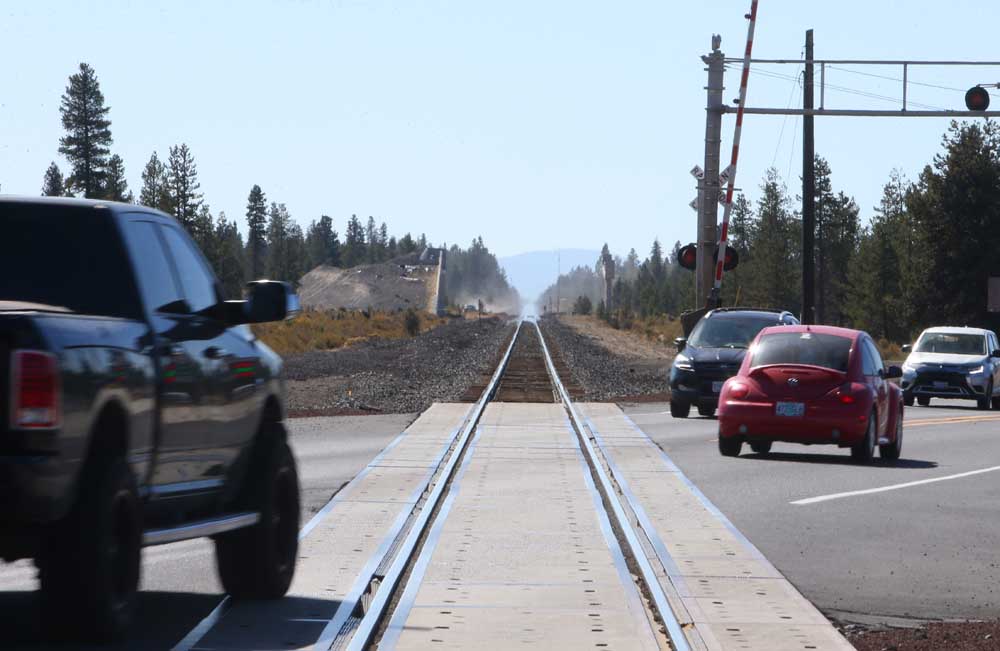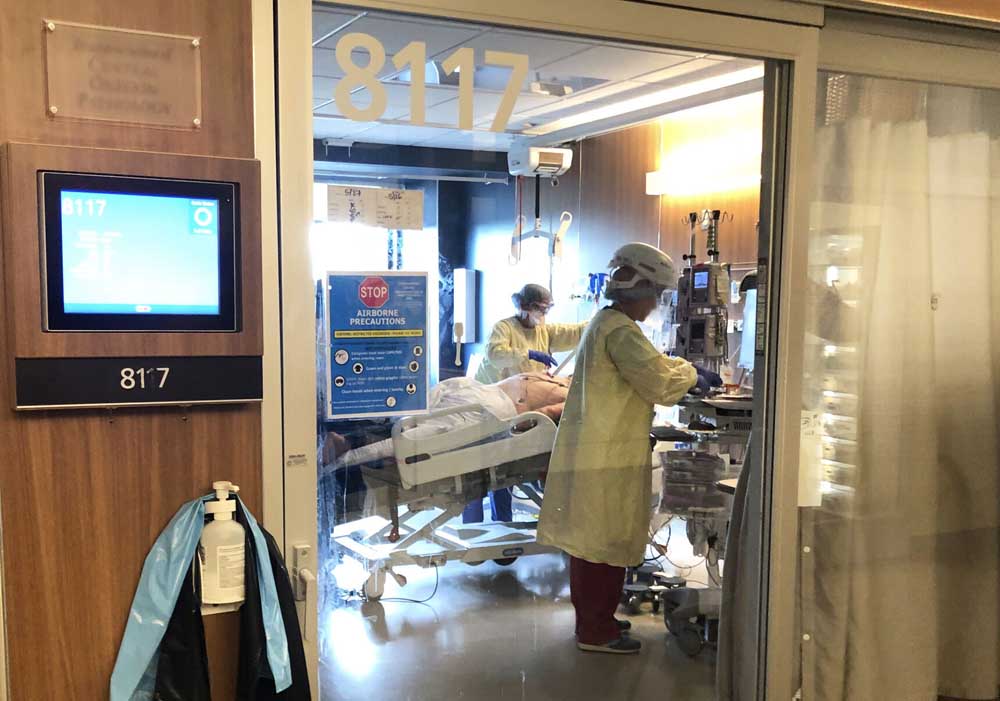Study shows failed La Pine overpass could be rebuilt for $47M to $63M
Published 5:45 am Tuesday, October 1, 2024

- The failed Wickiup Junction overpass, center, sits near Wickiup Junction at the intersection of U.S. Highway 97 and the Burlington Northern Santa Fe Railway, bottom, near La Pine on Monday afternoon.
A new study on the failed Wickiup Junction overpass near La Pine has left state highway officials with an expensive decision to make about whether to revive the project.
More than seven years ago, the Oregon Department of Transportation began monitoring remnants of the halted, partly built $17 million construction project not long after discovering supportive concrete piers were sinking into unstable soils.
A feasibility study published Sept. 17 shows the bridge remnants have continued to sink up to 2 inches per year.
The study didn’t sink all hope that a railroad overpass at Wickiup Junction could eventually be built, but updated cost estimates fall between $47 million and $63 million.
“There is no identified funding for the project at the moment, and there’s no schedule for the project at the moment. No one is moving forward today on design,” said Emerald Shirley, who leads the project for the Oregon Department of Transportation. “But now that the study is out and we have a better idea of what we could do there and how much it costs, we can start to have those planning conversations again.”
Wickiup Junction is the only remaining railroad crossing on U.S. Highway 97 in Oregon. It’s still a concern for the transportation agency’s Central Oregon region, Shirley said.
Study could revive Wickiup Junction project — with a $75M to $100M price tag
But the key project faces an unlikely obstacle: precariously porous soil deposits filled with microscopic plant fossils.
Because the shells of ancient organisms, called diatoms, are filled with so much empty space, the heavy weight of the bridge supports compressed the soil, sinking by 12 inches in the first six months and continuing steadily in the years after. ODOT halted construction due to the compression in 2017.
Previously, ODOT considered speeding up the compression process to create stable soil with a process called surcharging. But the new study rules out that option because of continued settlement, Shirley said.
“We would expect to see a pause to that compression, a finishing to that compression,” Shirley said. “We’re not seeing that here.”
In 10 years, the abutments could sink by another 1 to 2 feet, and by up to 5 feet in 100 years, according to the study.
The best remaining option is to simply use a lighter fill made of recycled glass, as opposed to earthen material.
Years after construction was halted, the state transportation agency finds itself in a tight financial situation. The agency has forecast a $354 million budget shortfall in 2025 and warned of statewide layoffs without help from the Legislature in the coming session.
Because of the funding issues, the state is prioritizing maintenance of existing roadways instead of major capital projects, Shirley said.
ODOT spent $14.3 million building the failed bridge and then removing its girder, which would have supported the deck of the bridge. The remaining $1.7 million from the project’s budget was redirected to intersection projects in the La Pine area.
Continued sinking of the bridge abutments has rendered them unsalvageable, but there’s still a chance some of the construction material could be salvaged, Shirley said.
Failed bridge spurs soil research
As ODOT ponders what to do about Wickiup Junction, the failed project continues to spur research into diatomaceous soils and their challenges for building infrastructure, though it hasn’t changed the standard soil tests required for a construction project.
“It certainly put it on our radar that we have diatomaceous soils in places we weren’t originally expecting,” Shirley said.
Standard pre-construction assessments of the soils near La Pine did not detect diatoms because the tiny organisms are only visible through an electron microscope, Shirley said.
Since 2017, ODOT has funded ongoing research through Oregon State University and Portland State University on the character of the soils at Wickiup Junction.
Prior to that, there was very little research on the construction capabilities of diatomaceous soils, said Jintai Wang, a professor of civil engineering with the Oregon Institute of Technology in Klamath Falls. Wang has published several studies on the topic since he began at OIT in 2021, motivated by the failed overpass project and the desire to know more about how the unstable soils would perform in an earthquake.
He wants to continue to study how much weight diatomaceous soils can bear — though that’s highly variable based on the type of plant that created the fossil.
“I hate to use the word wacky, but it’s pretty wacky,” Wang said of the microscopic plant fossil soils. “Just from the appearance, you can’t really tell. When you put it on your hand, you realize how light this material is. It’s incredibly light.”
“I hate to use the word wacky, but it’s pretty wacky.
Just from the appearance, you can’t really tell. When
you put it on your hand, you realize how light this
material is. It’s incredibly light.”
— Professor Jintai Wang, of the Oregon Institute of Technology, referring to the microscopic plant fossil soils.






